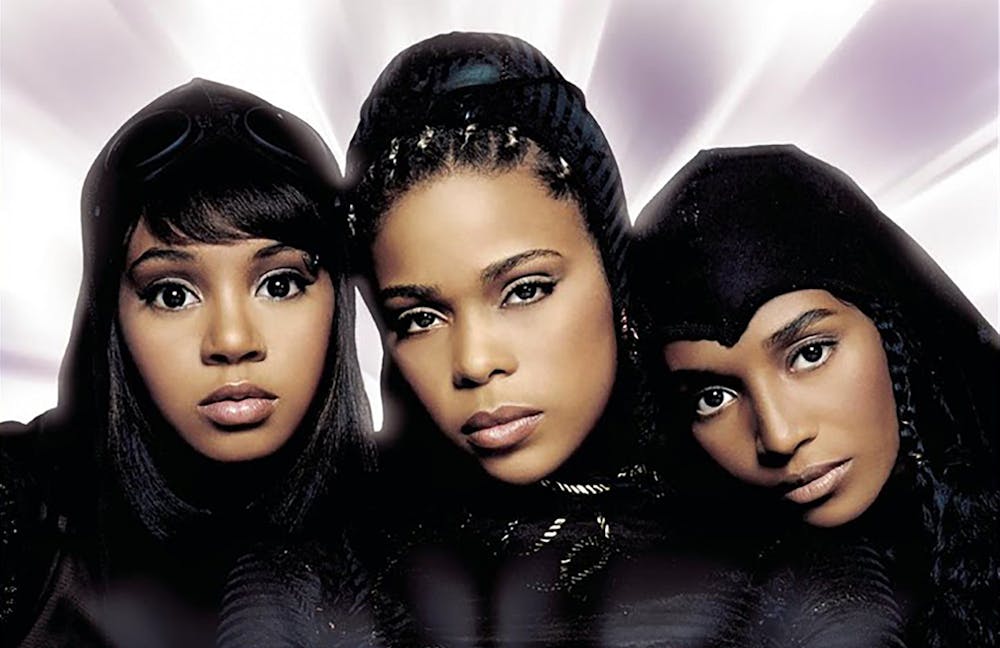The first thing that shows up when I open the Depop app is titled “cute y2k Paul Frank graphic baby tee.” It’s a child’s shirt, light pink and white striped, with the Paul Frank monkey face on it. They’re right, the shirt is cute, but the Y2K title — a shortened way of saying the year 2000 — is a bit of a misnomer.
Most teenagers think of low-rise jeans when they see the word “Y2K.” Most Gen-Xers think of something bigger and scarier: an inevitable computer bug known as the Y2K issue.
According to National Geographic, programmers were scared computers would not know how to count past December 31, 1999. People around the world thought their computers would short circuit and online information systems would crash, potentially disrupting regulatory systems for nuclear power plants.
Whenever a cultural phenomenon like this happens, the fashion world reacts. During the Space Race, designers crafted looks based on interstellar travel. In the Great Depression, artists created looks for a future they only dreamed of. It was inevitable that the Y2K issue would have an effect on fashion.
The fear of technology at the start of the Y2K era plunged fashion into metallics, leather, silver and other futuristic styles. Movies like "Hackers" and "The Matrix" show off the tiny sunglasses and latex that was central to this aesthetic as well. Early adopters of this look include TLC, Destiny’s Child and Missy Elliot — all influential black female artists.
So, with such a stark contrast to this “cute y2k Paul Frank graphic baby tee,” how does this so-called real Y2K get confused with the pink, shiny aesthetic of Paris Hilton? It’s simple: time.
Fashion works cyclically, and since it’s been 22 years since Hilton and Nicole Richie’s “The Simple Life,” we’re due for a 2000s fashion explosion. Young people participating in this revival, including myself, were not alive to remember the Y2K crisis and have only seen it as a short way to say “year 2000.” These people are still technically correct; some of these trends were incredibly popular in the early 2000s. Niche names have evolved for fashion trends, separating the 2000s into Afrofuturism and McBling.
Afrofuturism is close to true Y2K fashion, but with a specific focus on Black stylists and designers. Since most of the trendsetters for this style areBlack, many of the most distinct parts of this style come from Black culture, with some iconic examples being the slicked back ponytail or Bantu knots. The most popular Y2K looks are styled by Black stylists on Black artists.
McBling, on the other hand, was a direct response to 9/11. Teenage girls were looking for a distraction from the tragedy, hence an uptick in consumerism and an emphasis on bling. This trend directly followed Y2K, with Afrofuturism reigning from 1996-2001 and McBling gaining popularity from 2002-2007. Destiny’s Child turned in their Y2K outfits and opted for blinged out waist beads, extra low-rise jeans, and micro crop tops. Notable style icons for this trend include Paris Hilton, Snooki and Britney Spears.
I know this isn’t going to stop the average person from misusing the term Y2K, but hopefully this provides some clarity for those into fashion. The 2000s revival is so fun, although fully predictable.
Reviving fashion leaves room for new interpretations, but it also pays homage to the designers who created it. Following trends is always a blast. Knowing where the trends came from adds extra confidence to any look with ease.
Here are some current fashionistas that highlight the differences of these aesthetics:
For futurism - Julia Fox (for Matrix levels of latex and hair gel) and @myramagdalen on TikTok (for amazing incorporation of technology into fashion); fashion shows include Violet Chachki’s look in Richard Quinn FW22 and Marc Jacobs FW22.
For McBling - Kim Petras (for tacky levels of bling and bikinis) and @aliyahsinterlude on TikTok (for the perfect amount of pink); fashion shows include Blumarine SS22 and Valentino FW22-23.
Charlotte Jones (they/her) is a sophomore studying English and journalism.






